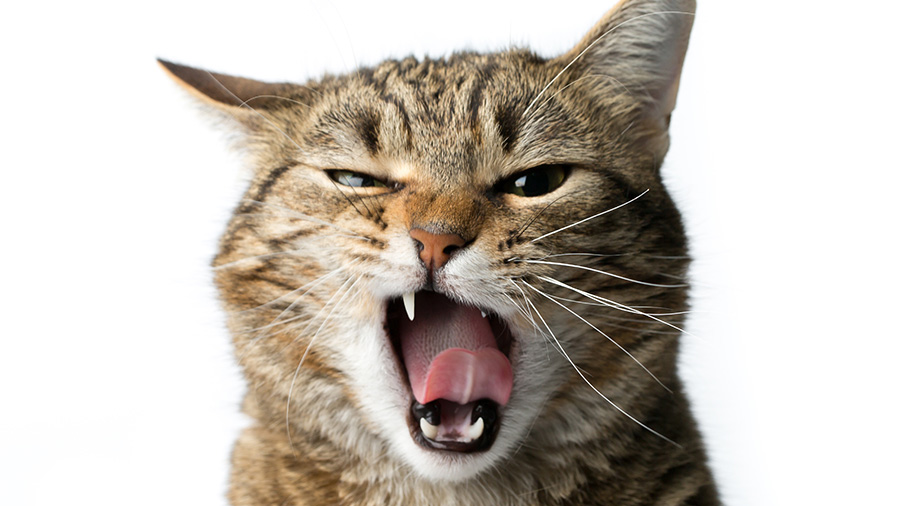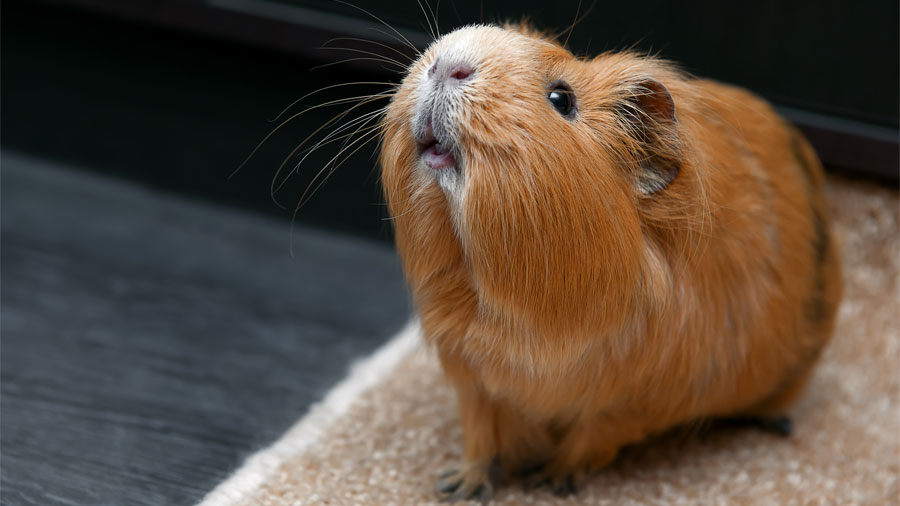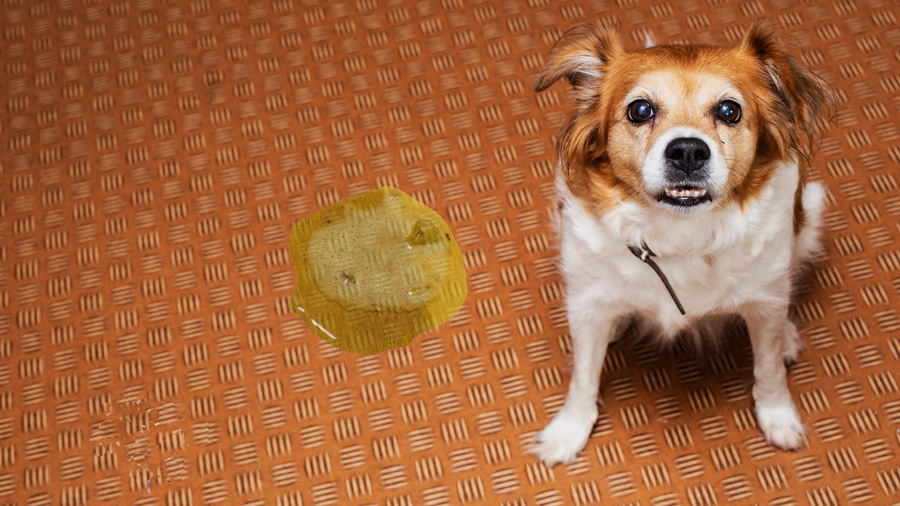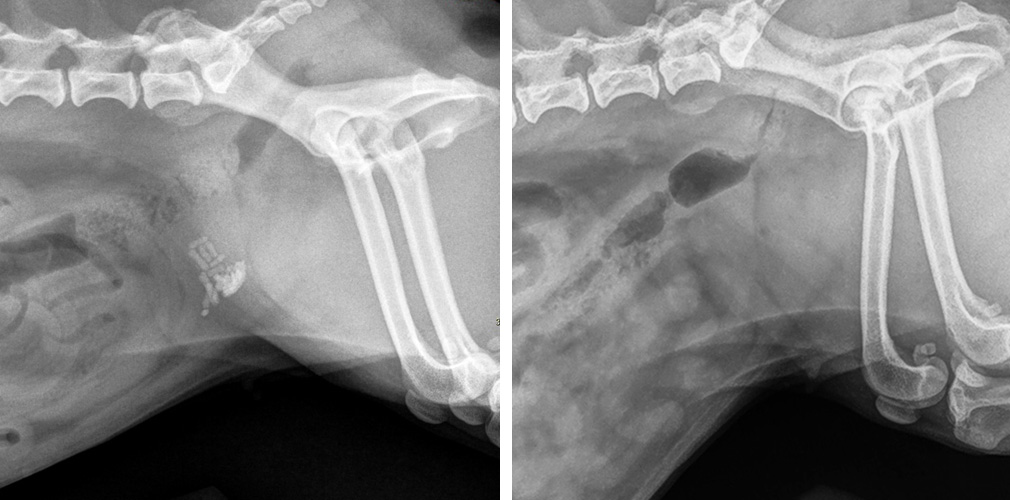February is National Pet Dental Health Month. That’s right – dental health is so important to our pets’ happiness and well-being that the American Veterinary Medical Association dedicated an entire month to it. It is critical that, as pet owners, we take time to understand why we need to think about our pets’ teeth and build and maintain healthy oral habits for them not only in February but all year round.
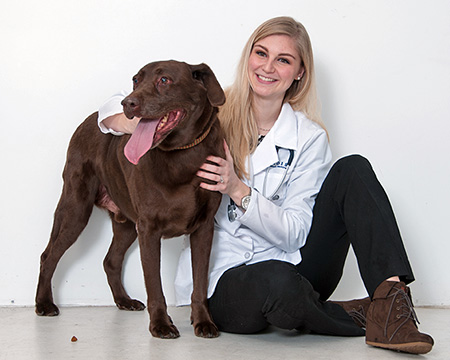
Dr. Alyssa Baratta-Martin, a veterinarian with the primary care service at the University of Illinois Veterinary Teaching Hospital, has expanded her knowledge and skills throughout her seven years in practice. She says her respect for the power of dental care has grown tremendously over this period.
“About 50% or more of my procedures at the moment involve dental health, which means there is constant opportunity to learn more and continually improve,” says Dr. Baratta-Martin. While dental exams and cleanings are routine procedures for veterinarians, some patients offer stark examples of just how impactful dental care can be. One such case involved an 8-year-old cat with a very painful mouth and no prior record of dental care.
Signs of Dental Problems
During the physical exam, the cat’s owners noted that she had been rubbing at her face more than usual. Right away, Dr. Baratta-Martin knew to put dental problems on her radar.
“Unusual pawing at the face is an indication that something may be uncomfortable orally. It’s a great thing to notice and point out to your veterinarian,” she says. “Other telltale signs to look out for include bad breath, excessive or blood-tinged drooling, chewing preferentially on one side of the mouth, or sudden changes, like a tooth sticking out oddly.”
Oftentimes, however, animals will conceal their pain for as long as they can, so it is crucial to have their teeth checked regularly, even if they do not show signs. If owners wait for an obvious problem, such as lack of appetite, to arise before getting their pets assessed, the disease is likely already in an advanced stage.
In this cat’s case, she was still eating and drinking completely normally despite her oral issues, which is very common. “If animals don’t eat, they don’t survive,” explains Dr. Baratta-Martin, “so for them to get to the point where oral pain is preventing them from eating altogether, something disastrous is happening. Don’t wait until you get to that point.”
A Closer Look, Disappearing Teeth
When Dr. Baratta-Martin took a closer look, she saw that the cat was already missing several teeth and had lesions around her mouth and face. It turns out that she had gingivitis along with resorptive lesions. A resorptive lesion happens when the body’s immune system triggers the gum tissue to absorb a diseased tooth. Though it sounds scary, this condition is not uncommon in cats and can be addressed effectively with a dental procedure. Depending on each patient’s individual needs, dental procedures can entail everything from a simple cleaning to full-mouth extractions.
During the procedure, Dr. Baratta-Martin and her team removed the cat’s diseased teeth, addressed the lesions in her mouth, and cleaned the teeth that remained to ensure they were healthy. They also discovered some broken tooth remnants in her gum line. These fragments, which can be a source of severe pain, can also be tricky to remove. For this cat, luckily, their removal went smoothly and without complication. Her anesthesia also went well, and she woke up with six fewer teeth and much, much less pain. She has not had any issues following the procedure.
Improved Quality of Life
A common question that veterinarians get is whether their pet will be okay with fewer, or in some cases, no teeth remaining after a dental procedure. The fact is that pets tend to do remarkably well adjusting to life after extractions. Of course, owners need to take into consideration the cost of the procedure and the risks associated with any procedure involving anesthesia.
“More often than not, I get owners who feel like their pet is acting like a puppy or kitten again. They didn’t realize how the pet’s behavior or mood had been altered until after the dental,” says Dr. Baratta-Martin. “The vast majority of the time, dental procedures are tolerated really well and do wonders to improve quality of life for the animal.”
The case of this kitty highlights not only how dental work may improve a pet’s quality of life, but perhaps more importantly, the importance of having a veterinarian look at your pet’s teeth regularly. With routine preventive care your pet may not need to have a dental procedure in the first place.
Prevention Pays Off
“Preventive care doesn’t have to be extensive, just a veterinarian assessing the teeth and gums. Then, it is important to consider the recommendations that are given to you. For example, brushing teeth at home is the best way to take care of your pet’s teeth and prevent tartar buildup,” says Dr. Baratta-Martin.
“When you think about it,” she continues, “we brush our teeth twice a day—sometimes more—and still need a dental cleaning every 6 months! So, you can imagine how much disease can be present in a pet’s mouth when they’ve never had their teeth brushed and have gone years without a formal cleaning.”
Dr. Baratta-Martin recommends that owners read up on daily oral hygiene practices for pets. There are plenty of readily available resources online. If daily brushing is not feasible for your situation, she advises building the cost of a dental procedure into your pet care budget from the get-go. Having that financial resource available helps ensure your pet’s long-term health.
So, if you’ve not done so yet, let this serve as your reminder to get your pet in for an annual physical. While you are there, ask your veterinarian about the state of your pet’s teeth and mouth.
Pet Dental Health Month is also a great time to adopt regular habits, such as brushing, to keep your pet’s teeth clean. Remember: year-round oral health is a key contributor to a long and happy life for your companions.
By Jenna Camargo

